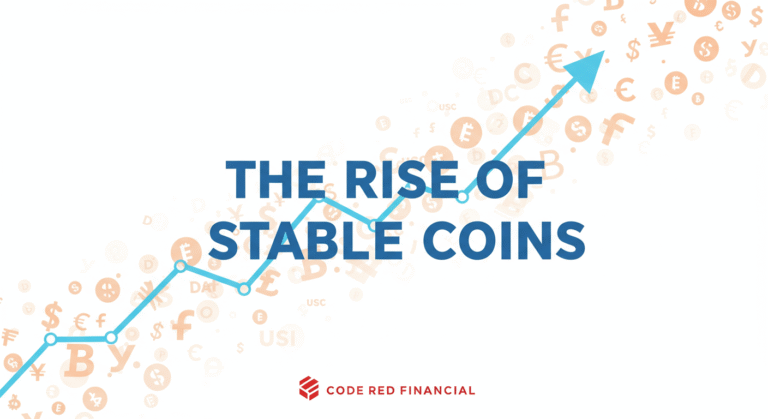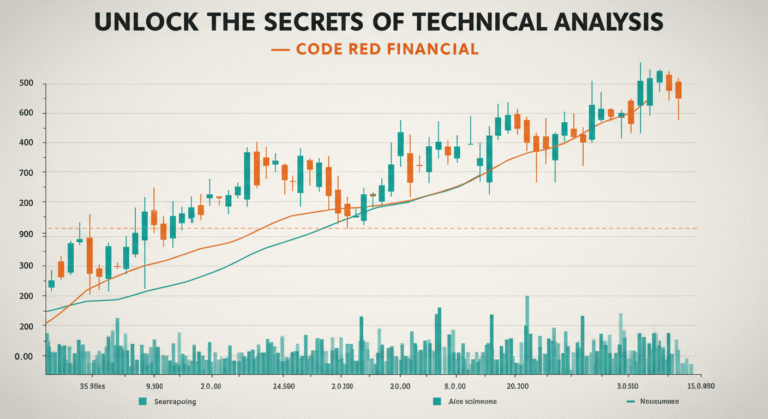Understanding Cryptocurrency Risks
The world of cryptocurrency presents unique investment opportunities; however, it is equally accompanied by a range of inherent risks that potential investors must recognize. One of the most significant risks is market volatility. Cryptocurrency prices can fluctuate dramatically within short periods, driven by various factors, including market speculation, geopolitical developments, and technological advancements. This unpredictability can lead to substantial financial losses for investors who are unprepared for sudden price changes.
Additionally, the lack of regulation in the cryptocurrency space adds another layer of risk. Unlike traditional financial markets, where regulatory bodies provide oversight and ensure a level of investor protection, the decentralized nature of cryptocurrencies means that there are few safeguards in place. This absence of regulation can make investors more susceptible to fraud, such as Ponzi schemes or other types of scams. Without regulatory frameworks, it becomes challenging to hold anyone accountable, resulting in a potentially hazardous investment environment.
Technological vulnerabilities also play a critical role in the risks associated with cryptocurrency. Digital wallets, exchanges, and blockchain systems can be susceptible to hacking and cyberattacks. Investors can lose their entire investment within moments due to security breaches, highlighting the importance of safeguarding one’s assets through secure practices. This is particularly concerning given that many investors lack a comprehensive understanding of cryptocurrency technology, which can exacerbate the potential for exploitation.
In summary, understanding the risks involved in cryptocurrency investing is crucial for anyone looking to enter this volatile market. Market volatility, lack of regulation, and technological vulnerabilities significantly contribute to the unpredictability of the cryptocurrency landscape, posing potential threats to investors’ financial stability. Adequate research and caution are advisable to navigate this complex financial environment effectively.
The Volatile Nature of Crypto Markets
The cryptocurrency markets are notoriously known for their extreme volatility, a characteristic that can lead to significant financial losses for investors. Unlike traditional financial markets, which are influenced by economic indicators and corporate performance, crypto prices are often driven by speculative trading, regulatory news, technological developments, and market sentiment. This creates a landscape where values can fluctuate wildly in a matter of hours.
One of the most notable examples of this volatility was the 2017 Bitcoin boom, where prices surged from around $1,000 in January to nearly $20,000 by December. However, this meteoric rise was followed by an equally dramatic crash, with Bitcoin’s price plummeting to about $3,000 by December 2018. Such drastic fluctuations can lead to panicked selling and purchasing, affecting investor behavior and overall market stability.
The psychological impact of rapid price movements can also not be underestimated. The fear of missing out (FOMO) often drives investors to make impulsive decisions, purchasing cryptocurrencies at inflated prices, only to face severe losses when the market corrects. Conversely, fear during market downturns can lead to panic selling, causing further declines in value. This cycle of heightened emotions not only amplifies market volatility but may also contribute to a sense of regret among investors who do not have a clear strategy in place.
Furthermore, the lack of regulation in many cryptocurrency exchanges can exacerbate these issues, as traders may not have the same protections they would in traditional markets. This precarious environment highlights the importance of risk management strategies for investors, allowing them to navigate the unpredictable waters of cryptocurrency trading more effectively. Understanding these dynamics is crucial for anyone looking to invest in cryptocurrencies.
Unregulated Financial Environment
The cryptocurrency market is characterized by its largely unregulated nature, presenting unique challenges and risks for investors. Unlike traditional financial markets that are governed by stringent regulations and oversight, the cryptocurrency space operates in a paradigm with minimal regulatory frameworks. This absence of regulation can significantly amplify the vulnerabilities associated with investing in digital currencies. Investors may find themselves exposed to a variety of risks, including market volatility, lack of transparency, and potential fraud.
In a landscape where investor protections are not mandatory, unscrupulous actors can emerge, taking advantage of the uninformed or unsuspecting. Unregulated exchanges, in particular, pose substantial risks, as they may lack the necessary safeguards to protect customer funds. These platforms can engage in practices such as misleading advertising, inadequate security measures, or even insolvency, leaving investors with little recourse in the event of financial loss. Furthermore, the anonymity that characterizes many cryptocurrency transactions can embolden fraudulent schemes, with individuals or organizations concocting elaborate scams to exploit hopeful participants.
The implications of investing in an unregulated market extend beyond the potential for financial loss. It can undermine confidence in the viability of cryptocurrencies as a legitimate asset class. As more individuals venture into this space seeking opportunities, the risk of encountering scams or being misled by unreliable information increases. The lack of a regulatory body means that investors must independently vet information, conduct thorough research, and exercise caution. Ultimately, while the promise of high returns may lure many to cryptocurrency, the unregulated nature of this environment necessitates a vigilant and informed approach to investing.
Common Cryptocurrency Scams
The rise of cryptocurrency has unfortunately given birth to various fraudulent schemes that prey on unsuspecting investors. Awareness of these common scams is crucial for anyone considering entering the digital currency space. One of the most notorious types of scams is the Ponzi scheme. This scheme promises high returns on investments with little risk involved, often enticing individuals to invest their money based on fabricated success stories. In reality, returns paid to earlier investors come from the capital of new investors rather than legitimate profits, leading to significant financial losses when the scheme collapses.
Another prevalent scam is the phishing attack, which usually entails fraudulent communications that seem to originate from trustworthy sources. Scammers may send emails or messages that impersonate well-known cryptocurrency exchanges or wallet services, prompting users to click on links leading to fake websites designed to steal private information. Recognizing the warning signs of phishing, such as poor grammar or suspicious links, is vital for protecting personal data and cryptocurrency holdings.
False investment opportunities are also rife in the cryptocurrency sector. Scammers frequently create websites or platforms that guarantee extravagant returns with little to no risk, often accompanied by persuasive marketing tactics. These schemes may showcase fake testimonials or unverifiable data to lure investors. Often, individuals fall victim to these scams due to their desire for quick wealth and lack of understanding of the inherent risks associated with cryptocurrency investments.
To mitigate these risks, it is essential to conduct thorough research and remain skeptical of opportunities that seem too good to be true. Being aware of these common cryptocurrency scams can help investors avoid financial traps and navigate the cryptocurrency market more safely.
Recognizing Red Flags in Crypto Investments
As the cryptocurrency market continues to evolve, so does the presence of scams and fraudulent schemes targeting unsuspecting investors. It is essential to remain vigilant and recognize red flags that may indicate a potential scam. By being aware of these warning signs, individuals can protect themselves and make more informed decisions when navigating the complex world of crypto investments.
One of the primary indicators of a potential scam is a lack of transparency. Legitimate cryptocurrency projects encourage open communication, often sharing their team members’ backgrounds, methodologies, and financial plans. If a project hides its team or provides minimal information about its operations, it may warrant further scrutiny. Transparency is foundational in establishing trust within the cryptocurrency community; hence, an absence of it is a significant red flag.
Unrealistic promises of high returns also serve as a common warning sign. If an investment opportunity claims guaranteed returns, especially those significantly above market averages, it is prudent to approach with caution. Cryptocurrencies are inherently volatile assets, and while some investors do achieve substantial gains, the assurance of consistent, high returns is often a tactic used by scammers to lure in victims. A healthy skepticism, paired with thorough research, is vital in these situations.
Additionally, pressure tactics, such as urging immediate investment, can indicate a fraudulent scheme. Scammers often create a sense of urgency, pushing potential investors to act quickly without conducting proper due diligence. Always take the time to evaluate an investment opportunity critically, allowing room for discussions and consultations with trusted advisors. This helps ensure that decisions are well-informed and reduces the chances of falling victim to potential scams.
By being vigilant and recognizing these red flags—lack of transparency, unrealistic promises, and pressure tactics—investors can safeguard their assets and engage in the cryptocurrency market with greater assurance. The journey within this sphere should be marked by informed choices and a commitment to ongoing education.
Protective Measures for Cryptocurrency Investors
As cryptocurrency continues to gain popularity, implementing protective measures to safeguard investments is crucial for minimizing risks. One fundamental step is to utilize secure wallets for storing digital assets. Hardware wallets are often considered the safest option, as they store private keys offline, reducing the risk of online hacks. On the other hand, software wallets, while more convenient for transactions, may expose investors to security vulnerabilities if not adequately protected. Therefore, it is vital to choose wallets that offer robust encryption and two-factor authentication features.
Thorough research is another imperative protective measure. Investors should educate themselves on the various cryptocurrencies available in the market, their underlying technology, and market trends. This knowledge helps investors distinguish between legitimate projects and potential scams. Participating in community discussions, reading whitepapers, and following industry news can provide insights into the credibility and sustainability of a cryptocurrency before committing funds.
Additionally, staying updated on regulatory changes is essential for cryptocurrency investors. Governments and financial institutions worldwide are continually evolving their regulatory frameworks, which can significantly impact the crypto market. Monitoring these changes helps investors make informed decisions and remain compliant, thereby mitigating the risks linked to legal issues that may arise from investing in unregulated assets.
Finally, having a well-defined exit strategy is vital when engaging in the volatile cryptocurrency market. This strategy should outline specific goals, such as targeted profit levels or acceptable loss thresholds. By establishing these parameters, investors can make rational decisions based on predefined criteria rather than being swayed by emotional reactions to market fluctuations. Overall, incorporating these protective measures will enable cryptocurrency investors to navigate the complexities of the market with greater confidence and security.
Conclusion: Navigating the Crypto Landscape Wisely
As the realm of cryptocurrency continues to grow and evolve, so too does the landscape of associated risks and potential scams that investors must navigate. Throughout this blog post, we have explored various hazards, including fraudulent initial coin offerings (ICOs), Ponzi schemes, and phishing attacks, which aim to exploit unsuspecting individuals seeking to enter the crypto market. Understanding these risks is crucial, as they can lead to significant financial losses that may be difficult to recover.
A common trait among many scams is the promise of high returns with minimal investment risk, a concept that should raise immediate red flags. Investors are urged to approach offers that sound too good to be true with skepticism. Moreover, the volatility inherent in cryptocurrencies further amplifies these risks, as market fluctuations can result in abrupt losses. Consequently, diligent research and a cautious approach are needed when engaging in cryptocurrency investments.
Additionally, the allure of anonymity and decentralization that cryptocurrencies provide can make it challenging to track down and recover lost funds. For these reasons, it is imperative to exercise robust due diligence before committing financial resources to any cryptocurrency or token. This includes thoroughly vetting platforms, scrutinizing the teams behind projects, and staying informed about the latest trends and developments in the industry.
In conclusion, navigating the complex world of cryptocurrency requires vigilance, education, and preparedness. By remaining informed of the risks and actively seeking to understand the intricacies of the crypto landscape, investors can better protect themselves from potential scams. Ultimately, a well-informed approach can lead to more successful and secure experiences in the cryptocurrency market.








